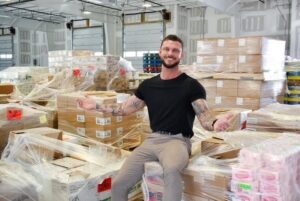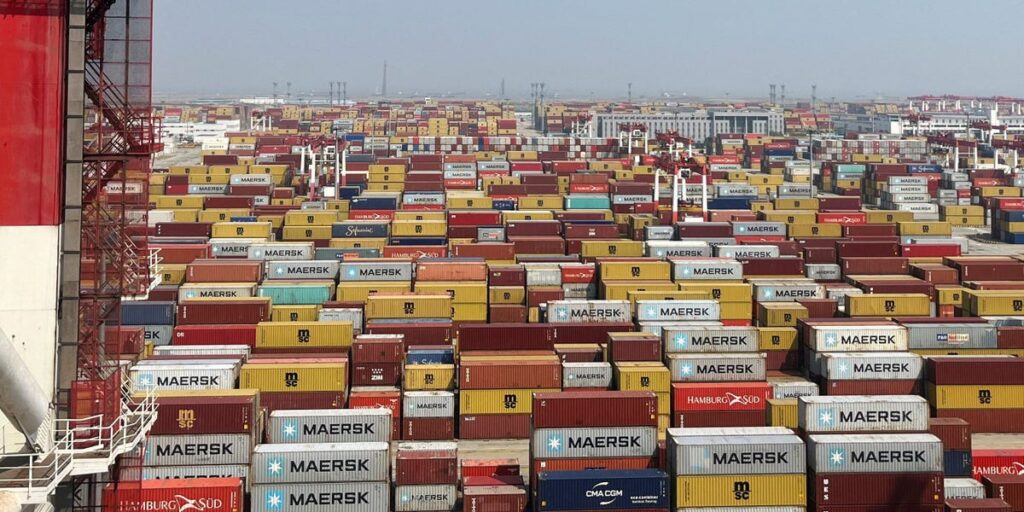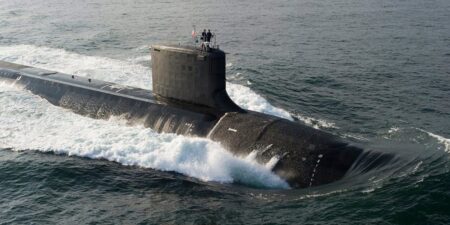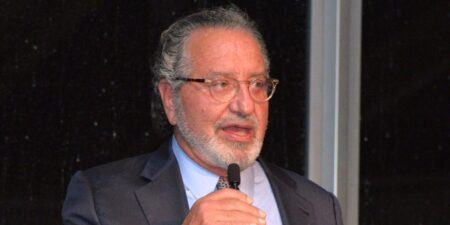- Some businesses say moving supply chains out of China more costly than absorbing Trump’s tariffs.
- Companies are negotiating with manufacturers to keep costs down and reduce consumer pain.
- A supply chain expert said uncertainty in policies may pose bigger challenges in business planning.
The Trump administration’s tariffs on goods imported from China have left businesses wondering if they should move their supply chains elsewhere.
But some say the cost of finding new suppliers and relocating production isn’t feasible.
“It can be way more expensive to move your supply chain than to eat the tariff,” said Michael Wieder, cofounder and CMO of Lalo, a baby product brand with most of its supply chain in China, told Business Insider. “We don’t want to react on things that are going to end up being a waste of money and a waste of time.”
Wieder said products for children tend to be more regulated for safety reasons, so he would not be able to quickly replace established factories and engineers that meet the requirements.
“We’re going to work with our suppliers to negotiate our costs down where we can to make sure it doesn’t impact our business. But the tariffs are inflationary, there’s no doubt about it,” he said.
Trump issued an executive order on February 1 that any products from the PRC, as outlined in the Federal Register notice, will legally face an extra 10% duty on top of the regular rate. He cited China’s failure “to stem the ultimate source of many illicit drugs distributed in the United States” as a reason for the tariff hike.
While the majority of drugs seized at the border come from Mexico, the US International Trade Commission estimated in a 2019 briefing that 97 percent of fentanyl in the US is manufactured using precursor chemicals from China.
While former President Joe Biden maintained most of the tariffs on Chinese imports that Trump implemented during his first administration and increased tariffs up to 100% on targeted products like electric vehicles and solar panels, he also maintained exemptions for categories of healthcare items like wheelchairs and baby products. These exemptions are, however, not mentioned in Trump’s latest executive order on China.
“We’re doing everything in our power to urge the administration to keep those exemptions,” said Wieder, “It’s not right to drive costs up on the things that parents need to buy for their children and for their babies. But we have our blinders on, we don’t control what’s going on in Washington.”
Other businesses say they can’t move their supply chain out of China without discontinuing key products, and even then, the move couldn’t happen anytime soon.
Jimmy Zollo, founder of adaptive wear brand Joe&Bella, said many of their highly specialized products, like magnetized and dual-track zippers that could be extended to the ankle, simply could not be sourced outside China. This could impact their main customer base: people living with cognitive changes and limited mobility.
“Changing a manufacturer isn’t just like packing up a suitcase and moving on over,” said Zollo, “It’ll probably take several months of back and forth if they can even find the right fabric, zipper, and dye — compound that with the fact that there are countless American businesses who are doing what we’re doing, which is trying to find see what other potential partners exist out there in the market.”
Aside from ordering more of their more popular products at the end of 2024, Zollo is now negotiating costs with manufacturers to reduce the impacts of the tariff because his customers likely don’t have the level of disposable income that would allow them to pay higher prices.
“At this point, there’s risk in staying, there’s risk in going, there’s risk in not doing anything,” he added.
Who will pay the price
Consumers likely won’t be receiving the full impact of the tariffs because every stakeholder along the supply chain absorbs a portion of the shock, from the supplier, manufacturer, transporter, to the final retailer, said Yossi Sheffi, director of the MIT Center for Transportation and Logistics.
However, the speed at which policies are being rolled out and retracted may pose a bigger challenge, Sheffi said.
“The main problem is nobody knows what to do because one day we have 25 percent on Mexico and Canada, and then the next day it’s paused for a month,” said Sheffi, “Things are being put on and off seemingly haphazardly, so it’s hard to plan. What business hates more than anything is uncertainty.”
Sheffi added the cost of moving a supply chain could be “prohibitive,” and the business strategy now is to wait and see.
A source familiar with the situation at US Customs and Border Protection said they do not know whether previously tariff-exempt imports from China remain free of duties. Due to the large number of queries they have received, they are still working through details. The Office of the US Trade Representative did not respond to requests for comment.
Read the full article here
















